Dental Inlays & Onlays in New York City
Serving Midtown East, Upper East Side & Surrounding Areas
Teeth are made of the hardest material found in the human body, surpassing even the strongest of bones. While they can withstand and exert enormous force, teeth are susceptible to certain types of damage. Teeth can fracture or break, but their structural integrity is most commonly affected by decay. A sticky substance called plaque, and the bacteria in the mouth found in this biofilm, are fueled by sugars in everyday foods. Acid is created as a byproduct of the bacteria’s feeding process, which wears away the teeth layer by layer. Once teeth are damaged, fillings are typically the first line of defense against future damage, offering immediate repair. In some cases, different types of restorations, dental inlays and onlays, are indicated for larger areas of decay.
What Are Dental Inlays & Onlays?
Dental Inlays and onlays often replace fillings, which are a more conventional dental restoration technique. A man-made material is used to cover areas of the tooth that have been damaged due to cavities. The tooth contains three main layers: The outer enamel, the dentin below, and the pulp inside the middle of the tooth. Enamel is a hard material that protects the tooth but can be worn away over time by acid-producing bacteria, certain types of food and beverages, and even brushing. Once the enamel has been compromised, the dentin layer may be affected by a cavity, which must then be filled.
Over time, a filling may expand or pull away from the tooth, causing bacterial leakage and the fracturing of teeth. Conversely, the material of the filling may contract within the tooth, allowing bacteria into small crevices within the tooth. Patients may have never had a filling in a tooth, but a fracture or large area of decay could also benefit from either procedure.
Inlays
Dental inlays can be thought of as a larger filling within a back tooth, like a molar. A synthetic material will replace a portion of the tooth and fits between the cusp tips (or the raised areas) of a tooth. The inlay often addresses restoration in the middle of the tooth as well.
Onlays
Similar to inlays, dental onlays cover a greater area of the tooth and provide a more extensive restoration. Also called a partial crown, onlays are intended to replace one or more cusp tip. An onlay can also be bonded to the entire top side of the tooth, called the biting surface.
Dental Inlay & Onlay Treatments

Both inlays and onlays are mid-level intervention between the conservative process of a filling and the more extensive process to create a crown. Rather than undergo the full process in Dr. Lazare’s office, patients will typically set two appointments, two weeks apart. During the first visit, patients will be given anesthesia while the damaged portion of the tooth is removed, and the remainder of the structure is shaped.
Dr. Lazare carefully eliminates decay or other failing areas of the tooth while maintaining its overall integrity to aid in tooth strength. Next, the patient will provide a dental impression that includes the newly contoured tooth. A temporary filling or cover will be placed until the restoration can be secured in place.
During the treatment-planning process for inlays and onlays, an impression of the teeth is created so the artificial tooth replacements can be crafted prior to placement.
Dr. Lazare’s office will send the impression to a dental lab to render a fabrication from ceramic and porcelain, resin, or gold. The first two options are tooth-colored, while gold will be visible in its traditional metallic color in the mouth. Patients commonly choose the ceramic and porcelain mixture for its strength and natural tooth coloration. The experts will craft a restoration that fits in the tooth and the adjoining teeth, while also considering the height of the new fixture to ensure the patient’s bite is maintained.
During the patient’s second appointment with Dr. Lazare, local anesthesia will be administered, and the temporary material will be removed from the tooth. Then, the inlay or onlay can be bonded in place with dental resin glue. The final step may be a gentle polishing after the resin has cured. Dr. Lazare will make any necessary adjustments to provide a great fit and seamless transition from the natural tooth to the synthetic material.
Advantages to Dental Inlays & Onlays
There are a number of benefits to undergoing inlay or onlay restoration treatment. Once in place, the tooth will be stronger than it was with one or more fillings because the materials used are now more durable. Inlays and onlays can provide a long-term solution and may remain in place for decades. When patients choose a tooth-colored material for the procedure, the treated tooth will look and feel natural.
Dental Candidates for Inlays or Onlays
These two solutions are best suited for patients who may have damaged fillings or teeth, but with enough natural tooth intact for either procedure. In these cases, a crown is not the best solution since Dr. Lazare tends to try to preserve the existing structure whenever possible. Fillings can weaken the teeth and should not be used to replace large portions of a missing tooth. The appointments for inlays and onlays are only slightly more invasive than a cavity filling, so most individuals with sufficient tooth material should qualify.
Contact the office at (332) 334-8290.

Frequent Inlays & Onlays Questions
-
How Long Should I Wait to Eat After an Inlay or Onlay Placement?The restoration will be cured into place, and is designed to last for many years. Once the local anesthesia has worn off and the cement has set, patients can chew with the treated tooth. Dr. Lazare will advise patients about which foods may be off limits (typically very sticky, chewy, or hard foods) to prevent the dental work from being compromised.
-
How Long Should I Wait to Eat After an Inlay or Onlay Placement?The tooth has already been damaged, which is why is requires repair. Though the structure must be reshaped, only decayed areas must be removed and fractured areas smoothed. While some of the natural tooth may be beveled, Dr. Lazare takes every precaution to preserve the natural tooth material.
-
What Are Inlays and Onlays?Inlays and onlays can be thought of as filling replacements or materials that can be added to the teeth when one or more areas have been damaged. While inlays go within a tooth, onlays go around the tooth, usually involving one or more broken or compromised cusps. Stronger than traditional fillings, these two types of restorations are ideal when a patient has enough remaining tooth to support the addition of the inlay or onlay, but does not yet require the more extensive placement of a crown.
-
I was impressed with how comfortable the office setting is and how knowledgeable Dr. Lazare is on cosmetic procedures. Highly recommend seeing him!
- Danielle
to Get Started? Call Us at 332-334-8290 or Schedule Your Next Visit
-
Monday: 8am - 5pm
-
Tuesday: 8am - 5pm
-
Wednesday: 10am - 7pm
-
Thursday: 8am - 5pm
-
Friday: 8am - 5pm
-
Saturday: 9am - 6pm
-
Sunday: Closed

